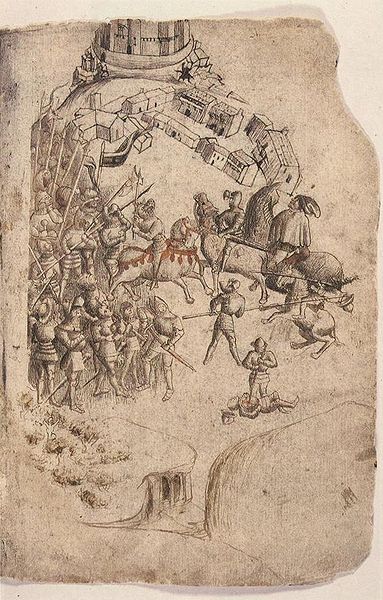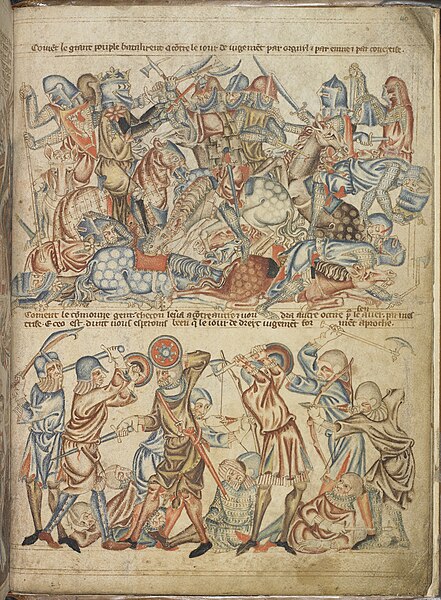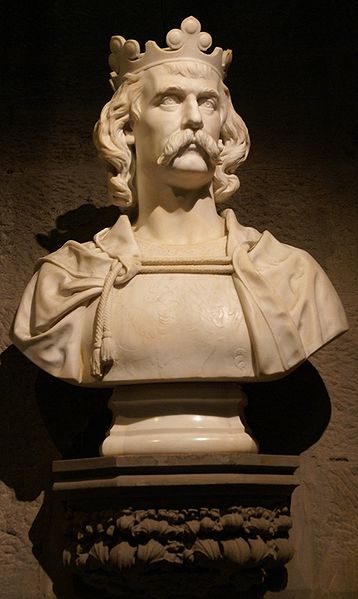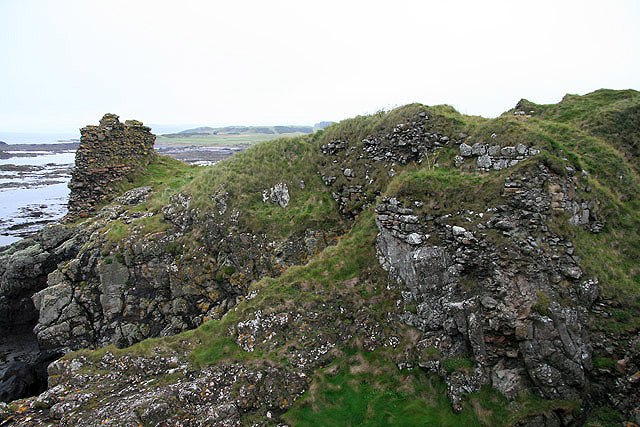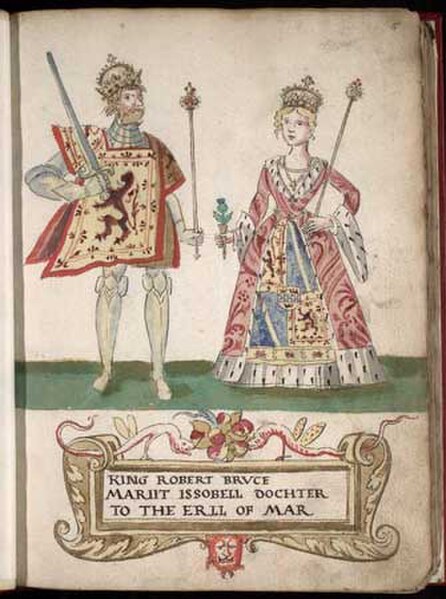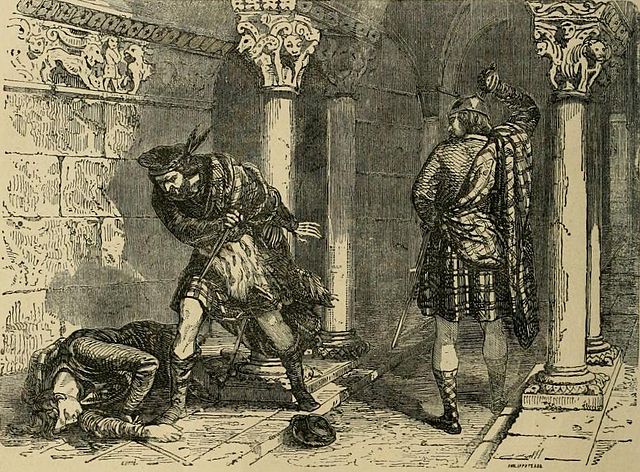The Battle of Bannockburn was fought on 23–24 June 1314, between the army of Robert the Bruce, King of Scots, and the army of King Edward II of England, during the First War of Scottish Independence. It was a decisive victory for Robert Bruce and formed a major turning point in the war, which ended 14 years later with the restoration of Scottish independence under the Treaty of Edinburgh–Northampton. For this reason, the Battle of Bannockburn is widely considered a landmark moment in Scottish history.
This depiction from the Scotichronicon (c. 1440) is the earliest-known image of the battle. King Robert wielding an axe and Edward II fleeing toward Stirling feature prominently, conflating incidents from the two days of battle. Corpus Christi College, Cambridge
Holkham Bible, c. 1330: Depiction of a biblical battle, giving an impression of how soldiers were equipped at Bannockburn.
The hemicircle of the modern Bannockburn monument
Bruce addresses his troops, from Cassell's History of England.
Robert I, popularly known as Robert the Bruce, was King of Scots from 1306 to his death in 1329. Robert led Scotland during the First War of Scottish Independence against England. He fought successfully during his reign to restore Scotland to an independent kingdom and is regarded in Scotland as a national hero.
Neoclassic bust of Robert the Bruce at the National Wallace Monument
The remains of Turnberry Castle, Robert the Bruce's likely birthplace
Robert the Bruce and his first wife Isabella of Mar, as depicted in the 1562 Forman Armorial
The killing of John Comyn in the Greyfriars church in Dumfries, as imagined by Felix Philippoteaux, a 19th-century illustrator

